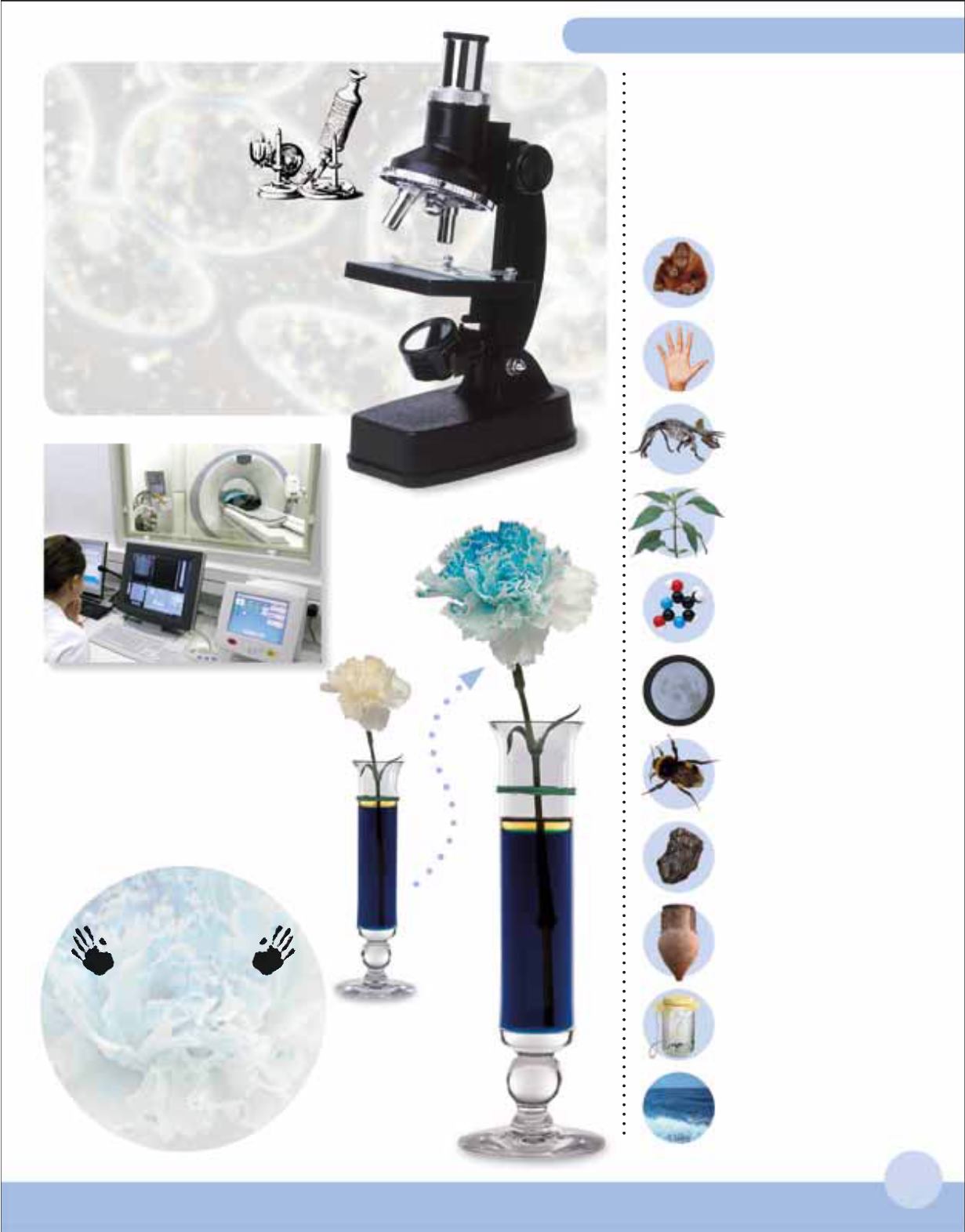
219
A closer look
During the
17th century,
the microscope
was developed
by Dutchman Anton
van Leeuwenhoek and
refined by Robert Hooke
in England. Early models
revealed the tiny organisms in
water, while modern versions
can look inside a single cell.
Being a scientist
Some microscopes can magnify up to 1,000 times!
Biologists
are interested
in everything about life
and living organisms.
Paleontologists
know
about fossils, and try
to learn from them.
Botanists
learn about
the world of plants, plant
types, and plant groups.
Zoologists
study animals
of all kinds, except for
human beings.
Types of scientist
Almost everything in
the world is the subject
of study by a scientific
specialist.
Plants take up food
and water from the soil
and transport it up the
stem. Experiments allow
scientists to observe
and theorize how things
work and why.
Astronomers
are experts
on space, the planets, the
stars, and the Universe.
Entomologists
are a
special kind of zoologist
who learn about insects.
Geologists
find out about
our Earth, particularly
by studying rocks.
Chemists
study elements
and chemicals, and they
help make new substances.
Ecologists
study the
relationship between living
things and their environment.
Oceanographers
know
all about ocean life and
landscapes.
Archaeologists
are
interested in the remains
of past peoples and lives.
H
a
n
d
s
o
n
Inside view
When you go to hospital,
the doctor may send you
for a body scan. Using
a powerful machine,
the medical team can see
what’s going on inside you.
Hooke’s
microscope
Fill a cup
or vase with
water, and add a few
drops of food colouring.
Cut the end off the stem
of a flower and put the
flower in the water.


